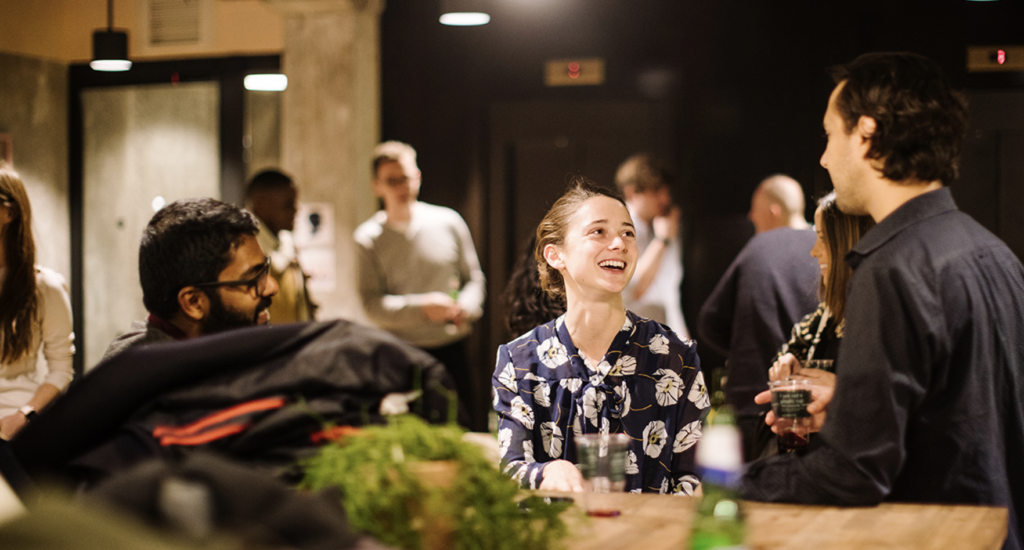Why the best media relationships still happen beyond email


PR runs on relationships. Some of the best start over coffee, many are also nurtured in DMs or inboxes. The trick isn’t choosing one over the other, it’s knowing when face‑to‑face time will lead to progress, and how to keep momentum when most of your relationship unfolds online.
There’s a reason a 20‑minute coffee can move things faster than twenty emails. In person, you hear what the email pitch process misses: what a journalist is interested in covering next or which stories their editor actually prioritizes. You can also show that you’re willing to invest time without demanding a headline on the spot. That’s how reputations are built for you and for the client.
Face‑to‑face time is especially helpful when:
Crucially, in‑person doesn’t have to mean a big lunch. A quick coffee near their office, a drink after work, or a breakfast before their 10am meeting all count.
Think of an in‑person journalist meeting as a mini‑workshop, not a transaction. You’re there to learn how to be genuinely useful. Skim three of their recent stories, note recurring themes, and bring one or two ideas that fit their beat, rather than a dump of everything your client could say.
Once you’re face to face, let the conversation breathe. It’s less about running through an agenda and more about picking up on what excites them, what stories they wish they could write, or even what formats they’re actually hunting for. Sometimes the most useful insights come up randomly, like the types of experts they’re always short of, or the stories they’re tired of seeing in their inbox.
Follow-up goes a long way. Share the nuggets you picked up, send over just the relevant materials, and make it easy for them to take the next step if they want to. It’s less about ticking boxes, more about keeping the momentum going and making sure you’ve genuinely helped move things forward.
It’s easy to assume the job is done after a successful face-to-face, but media relationships really thrive in the quieter moments. While those in-person chats are often where ideas spark, the real work happens in the spaces between. This includes doing the groundwork, reading a journalist’s recent stories, crafting a pitch that’s actually on target, or following up with exactly what you promised.
A single relevant, well-timed idea cuts through far more than a flood of generic press releases. And when you bring solid proof such as data, results, or a connection to someone who can give honest, first-hand insight, your message is much more likely to land.
Quick, reliable follow-up is part of this too. Reply promptly, deliver what you’ve promised, and give a heads-up if anything changes. These small actions quietly build your reputation for being dependable, even when things are busy.
It really comes down to two things:
Everyone’s got their preferred way of working. Some journalists are glued to LinkedIn, others check email obsessively, and a few are still active on X or Bluesky. Just pay attention to what they use and follow their lead.
But don’t forget, relationships aren’t just about work. It’s easy to fall into the habit of only reaching out to journalists when you have a pitch or need a comment, but the strongest media relationships are built on more than transactions. Genuine connections are nurtured in more casual moments, for example, dropping a quick note on LinkedIn to say you enjoyed a recent article, or congratulating them when they share a new role or accolade. Sometimes it’s as simple as liking or commenting on a post that has nothing to do with your clients or the news cycle, just showing up as a person, not only as a PR.
These small, sincere interactions show you’re paying attention, that you value their work, and that you’re interested in them beyond just what they can do for you. Over time, it’s those small touches, without any agenda, that build trust and a connection, making it much easier to strike up a conversation or collaborate when the time is right.
Overall, if there’s a secret to media relationships, it’s to show up as a person, be useful when it counts, and nurture the connection even when you don’t “need” anything. Start small, stay consistent, and you’ll find those relationships get stronger, more natural, and a lot more rewarding for both sides.
Receive all the latest news, events, and insights on B2B tech, marketing, and communications with Clarity’s free monthly newsletter.
As a consultancy, our full-funnel marketing and communications solutions are designed to fearlessly deliver business results across multiple industries and service areas.

Looking for a partner to help you reach your goals? We’d love to hear from you.